41 nutritional value food labels
Learn How the Nutrition Facts Label Can Help You Improve Your Health Nutrients Required on Label Vitamin D and potassium values are required. Calcium and iron will continue to be required. Vitamins A and C will no longer be required but can be included on a voluntary basis. Slight Decrease in Sodium Allowance The daily limit for sodium decreased slightly from 2,400 mg per day to 2,300 mg per day. PDF Teacher's Guide: Food Labels (Grades 6 to 8) - KidsHealth 3. True or false: Because food labels are written according to the calorie needs of adults, they are not useful for kids and teens. 4. The food label of your favorite snack says the serving size is 1 cup, there are 120 calories per serving, and there are 2.5 servings per container. How many calories are in the entire container? a. 120 b. 240 c ...
How to Read Everything on the Nutrition Facts Label - Food Network If 1 serving of a food has 120 mg of sodium, it can technically be labeled as a "low sodium" food. However, if you eat 3 servings, triple that number, and now you're consuming 360 mg of sodium,...
/https://www.thestar.com/content/dam/thestar/life/parent/2022/05/04/your-guide-to-understanding-nutrition-facts-labels/wh_healthykids_may4.jpg)
Nutritional value food labels
Food labels - NHS Some front-of-pack nutrition labels use red, amber and green colour coding. Colour-coded nutritional information tells you at a glance if the food has high, medium or low amounts of fat, saturated fat, sugars and salt: red means high amber means medium green means low In short, the more green on the label, the healthier the choice. How to Understand and Use the Nutrition Facts Label | FDA Dietary fiber, vitamin D, calcium, iron ad potassium are nutrients on the label that Americans generally do not get the recommended amount of. They are identified as nutrients to get more of.... The New Nutrition Facts Label | FDA The U.S. Food and Drug Administration (FDA) has updated the Nutrition Facts label on packaged foods and drinks. FDA is requiring changes to the Nutrition Facts label based on updated scientific...
Nutritional value food labels. The Basics of the Nutrition Facts Label - Academy of Nutrition and ... A food item with a 5% DV of fat provides 5% of the total fat that a person who needs 2,000 calories a day should eat. You may need more or less than 2,000 calories per day. This means that you may need more or less than 100% DV that is listed on the package for some nutrients. Low is 5% or less. Daily Value on the New Nutrition and Supplement Facts Labels The Nutrition Facts label must list total fat, saturated fat, trans fat, cholesterol, sodium, total carbohydrate, dietary fiber, total sugars, added sugars, protein, and certain vitamins and... Understanding Food Labels | The Nutrition Source | Harvard T.H. Chan ... Under the Food Allergen Labeling and Consumer Protection Act of 2004, eight major food allergens—milk, fish, tree nuts, peanuts, shellfish, wheat, eggs, and soybeans—are required to be listed in a "contains" statement near the Ingredients list if present in a food. An example would be "contains wheat, milk, and soy." How to Determine the Nutritional Value of Food - FoodCrumbles Micronutrients. Keep in mind: foods are variable. Determining the nutrient content in three ways. 1) Analyze the contents in a lab. 2) Used published values from literature. 3) Calculate your nutritional value. Determining energy content is a simple calculation. Set conversion values. Calculation example.
Food Nutritional Database | CalorieKing Beverages (Sports, Energy & Meal Shakes, Soda, Coffee, Tea) Coffee & Iced Coffee Energy/Nutritional Drinks & Mixes, Water Fruit/Vegetable Juices Malt, Cocoa & Hot Chocolate Milk & Flavored Milk Non Dairy Drinks: Soy, Rice, Nut, Cereal Soft Drinks, Soda Tea & Iced Tea Breads, Bagels, Rolls, Crackers, Cookies Breads & Bread Products Food Labels (for Teens) - Nemours KidsHealth The information on food labels is based on an average adult diet of 2,000 calories per day. The actual number of calories and nutrients that kids need will depend on their age, weight, gender, and level of physical activity. (For more guidance, check out the USDA's MyPlate .) Fat Total fat shows how much fat is in a single serving of food. Differences between EU and US nutrition labels go far beyond ounces and ... Then there's the nutrition facts label, which must include serving size, calories per serving size, calories from fat as well as the percentage of daily recommended values for fat based on a ... Nutrient Claims on Food Labels - Clemson University At least 25% less sugar*. Fiber Claims. (If food is not low in total fat, the label must state total fat in conjunction with the fiber claims.) High fiber. 5 grams or more. Good source of fiber. 2.5 grams to 4.9 grams. More or added fiber. At least 2.5 grams more*.
How To Read Food and Beverage Labels - National Institute on Aging Although frozen and canned fruits and vegetables have food labels, fresh varieties often do not. You can find nutrition information for fresh vegetables and fruits on the USDA website. Or you can call the U.S. Department of Agriculture's Food and Nutrition Information Center at 301-504-5414. Understanding percent Daily Value (% DV) Food Labeling & Nutrition | FDA Food labeling is required for most prepared foods, such as breads, cereals, canned and frozen foods, snacks, desserts, drinks, etc. Nutrition labeling for raw produce (fruits and vegetables) and... Nutrition Facts Label Images for Download | FDA Nutrition Facts Label Images for Download. NOTE: FDA has issued final changes to update the Nutrition Facts label for packaged foods. For more information, see Changes to the Nutrition Facts Label. The Science Behind Calories and Nutrition Facts Labels The calorie number we see on food labels refers to a kilocalorie (kcal), which is also known as a large calorie or a food calorie. A kilocalorie is 1 000 calories. One kilocalorie is the amount of energy it takes to heat one kilogram of water one degree Celsius at sea level.
Nutrition Facts Label - IFT.org - Institute of Food Technologists The 1990 Nutrition Labeling and Education Act requires disclosure of nutrient composition information on almost all packaged food and beverage products sold to household consumers. The Nutrition Facts Label, also referred to as the Nutrition Facts Panel, on packaged food and beverage products is intended to help consumers make informed food ...
Understanding Food Nutrition Labels | American Heart Association When the Nutrition Facts label says a food contains "0 g" of trans fat, but includes "partially hydrogenated oil" in the ingredient list, it means the food contains some trans fat, but less than 0.5 grams per serving. So, if you eat more than one serving, you could end up eating too much trans fat.
PDF BEEF LEAN/ 15% FAT O SAFE INSTRUCTIONS soeE ;OCO PRODUCTS SEPAUTE OTHER ... Nutrition Facts 2.5 servings per container Serving Size 40z (112gl Amount Calories Total Fat Trans Fat lesterol Sodium 7 Total Carboh drate Aued Sugar! Vitamin . Created Date:
Food Labels: Fat & Cholesterol | Home & Garden Information Center Quick Guide to % DV makes it easy to choose foods. It tells you that 5% DV or less of a nutrient is low, and 20% DV or more is high. For all nutrients that you want to limit (e.g., total fat, saturated fat, trans fat, cholesterol and sodium), choose foods often that contain 5% DV or less of these nutrients.
Nutrition Facts and Food Labels - Academy of Nutrition and Dietetics The Basics of the Nutrition Facts Label. Get to know the basics of the Nutrition Facts label, and understand the parts and pieces, from serving size, total calories and fat to percent of Daily Values. Teach Your Teen about Food Panels. If decoding the information on a food package is a challenge for adults, think of how hard it is for teens who ...
Food Labels | Nutrition.gov The U.S. Food and Drug Administration (FDA) has updated the Nutrition Facts label on packaged foods and beverages with a fresh design that will make it easier for you to make informed food choices that contribute to lifelong healthy eating habits. What's in a Name? What Every Consumer Should Know About Foods and Flavors
Calories for Hundreds of Foods: Your Calorie Chart Database Beans and other legumes are nutritional foods with calories from carbs, fat, and protein. Nuts & Seeds Nuts and seeds are high in fat and therefore calorie dense, but they are very nutritious. Oils & Fats Calories Oils & Fats Calories from oils are pure fat, but certain varieties like avocado are heart-healthy. Vegetable Oils
Food Labels | CDC All the numbers on this label are for a 2/3-cup serving. This package has 8 servings. If you eat the whole thing, you are eating 8 times the amount of calories, carbs, fat, etc., shown on the label. Total Carbohydrate shows you types of carbs in the food, including sugar and fiber. Choose foods with more fiber, vitamins, and minerals.
How Do They Calculate Calories on Food Labels? For example, using the Atwater method, a box of crackers that contains per serving... 5 grams of fat (5 x 9 = 45 calories) 22 grams of carbohydrate (22 x 4 = 88 calories) 2 grams of protein (2 x 4 = 8) ...should contain approximately 140 calories. It's important to recognize that 4-9-4 is an average, and not an exact amount.
How to Use the Nutrition Fact Label, Eat Right, NHLBI, NIH When using the Nutrition Facts label as a guide, try these tips: Keep these low: saturated fats, trans fats, cholesterol, and sodium. Get enough of these: potassium, fiber, vitamins A and C, calcium, and iron. Use the Percent Daily Value (% DV) column when possible; 5% DV or less is low, 20% DV or more is high. Visit the Smart Food Shopping ...
The New Nutrition Facts Label | FDA The U.S. Food and Drug Administration (FDA) has updated the Nutrition Facts label on packaged foods and drinks. FDA is requiring changes to the Nutrition Facts label based on updated scientific...
How to Understand and Use the Nutrition Facts Label | FDA Dietary fiber, vitamin D, calcium, iron ad potassium are nutrients on the label that Americans generally do not get the recommended amount of. They are identified as nutrients to get more of....
Food labels - NHS Some front-of-pack nutrition labels use red, amber and green colour coding. Colour-coded nutritional information tells you at a glance if the food has high, medium or low amounts of fat, saturated fat, sugars and salt: red means high amber means medium green means low In short, the more green on the label, the healthier the choice.
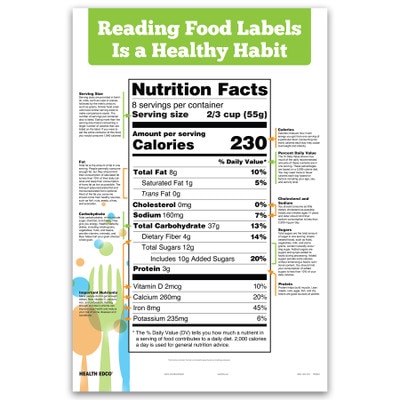
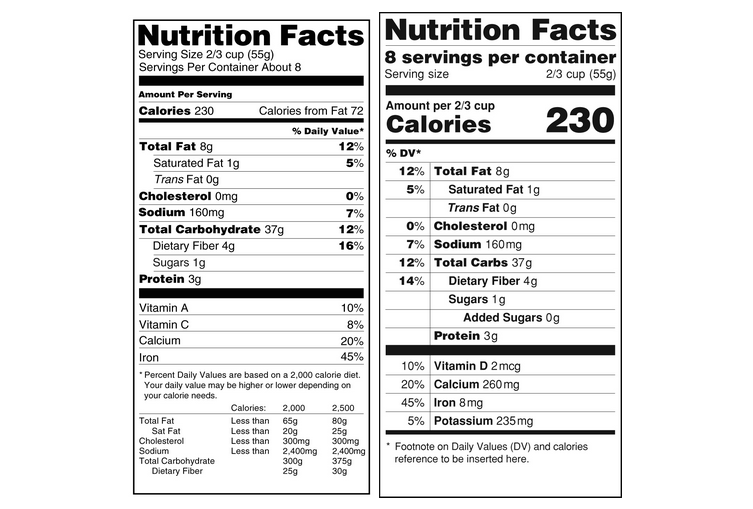
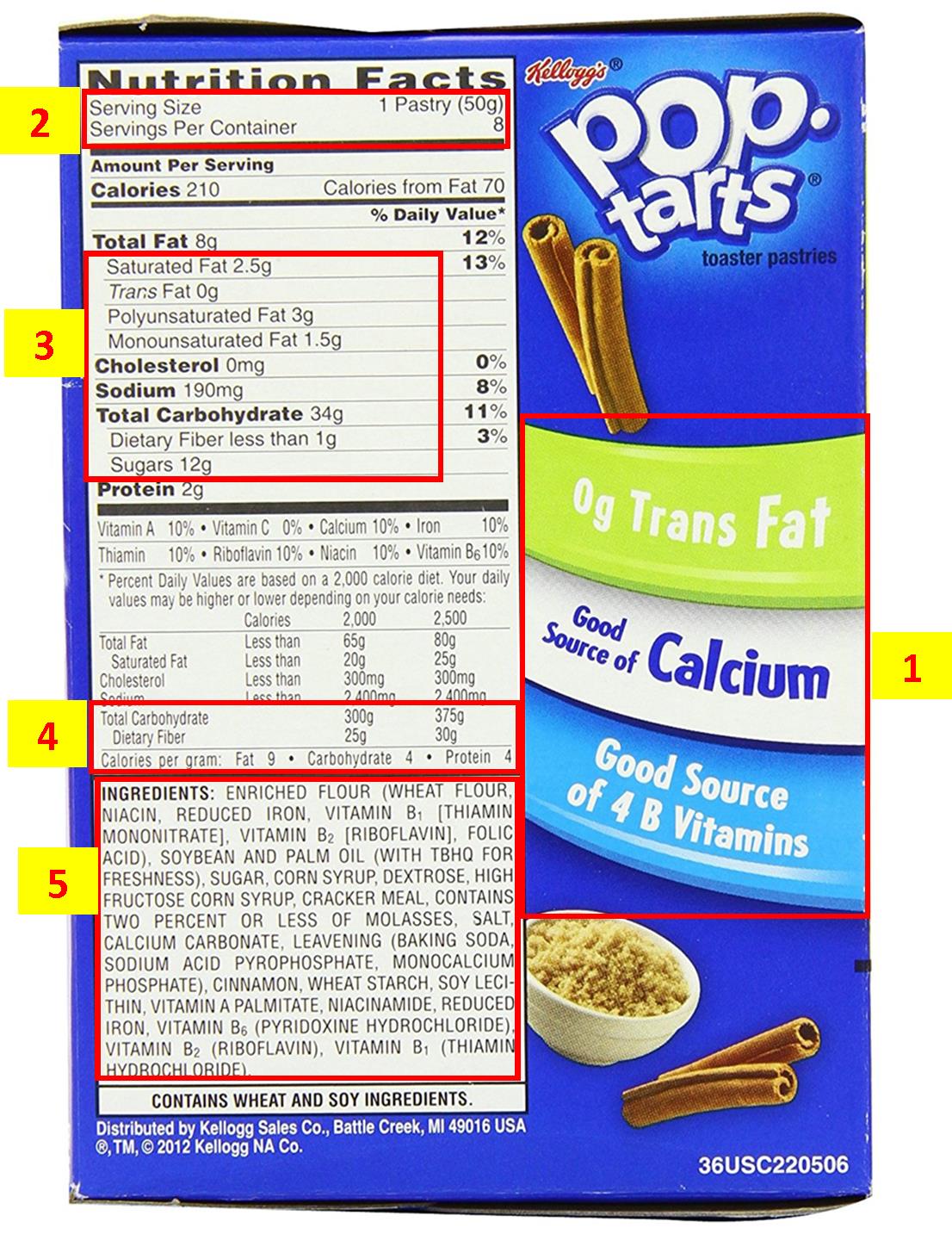


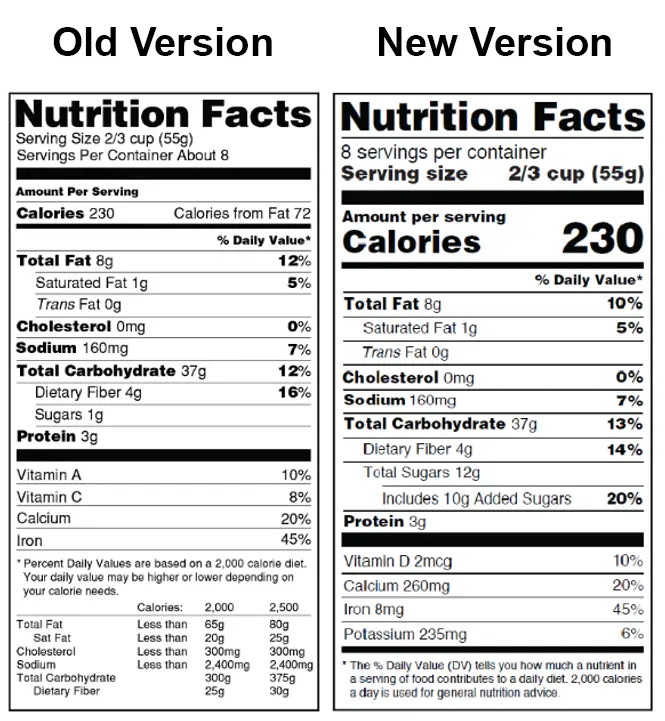

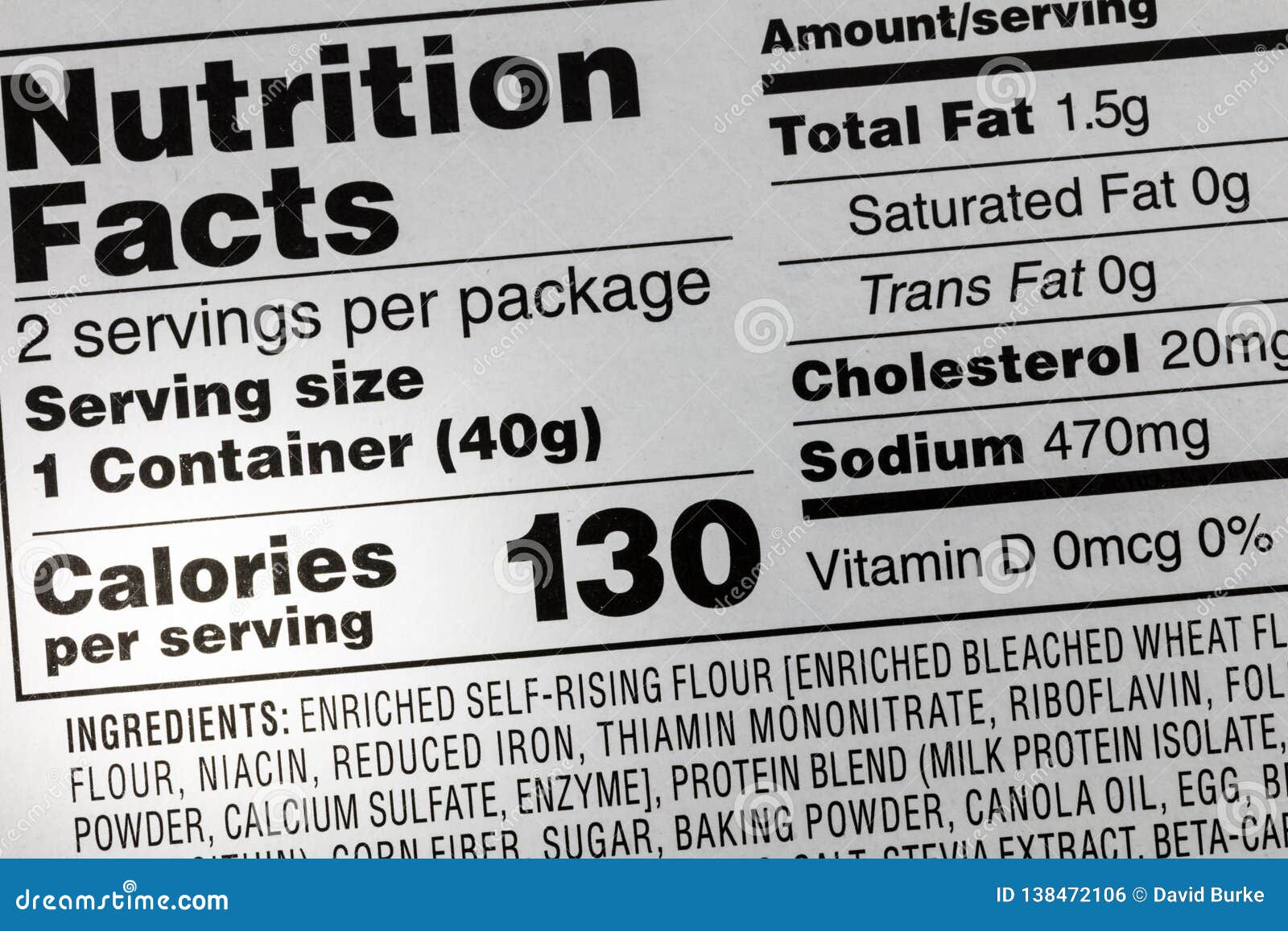






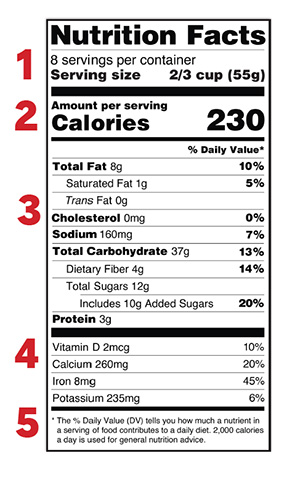
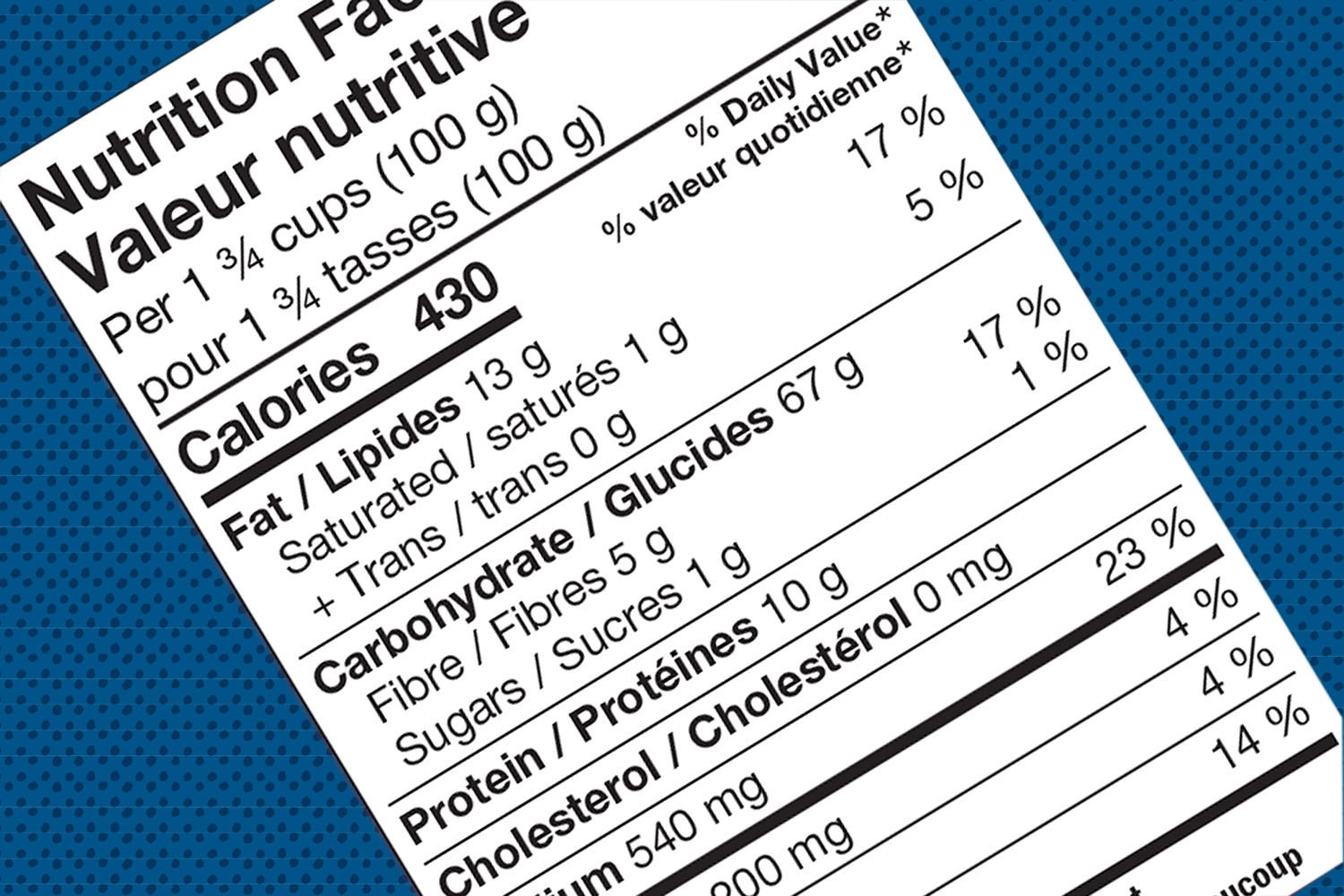



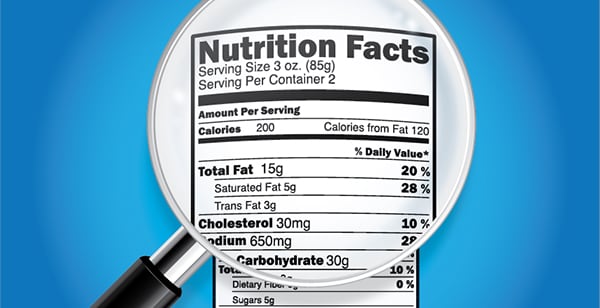







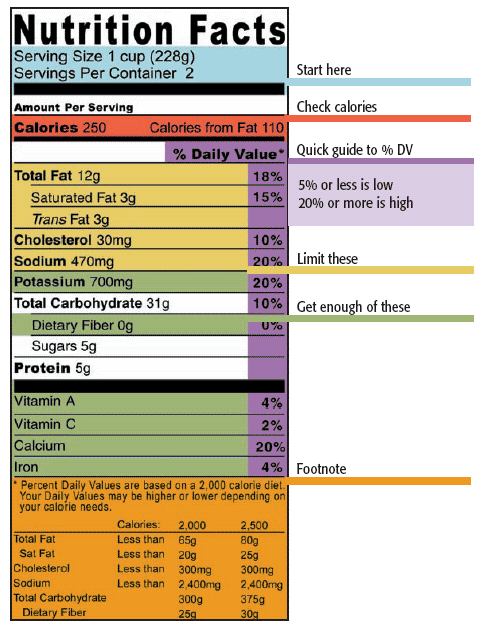

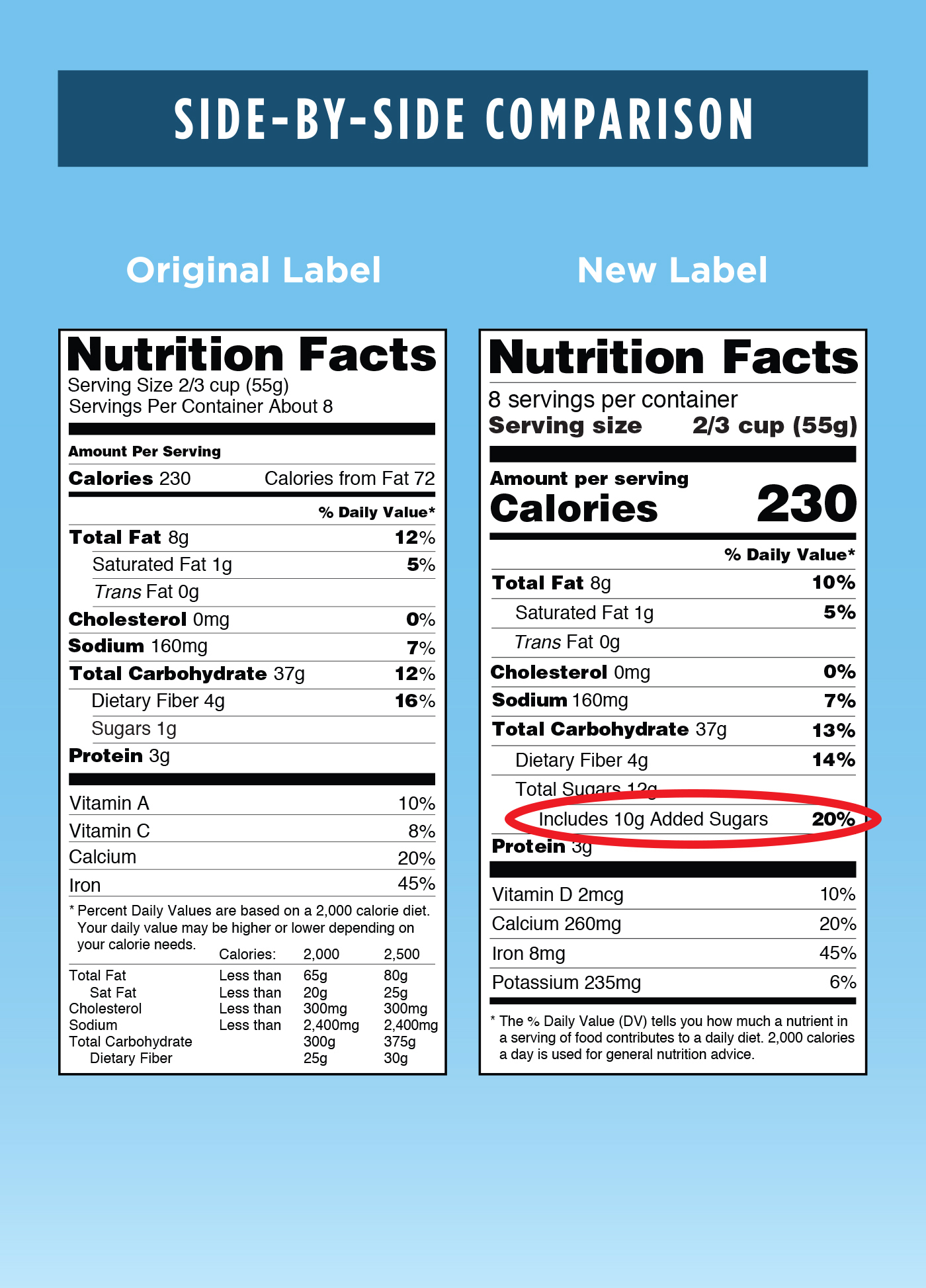
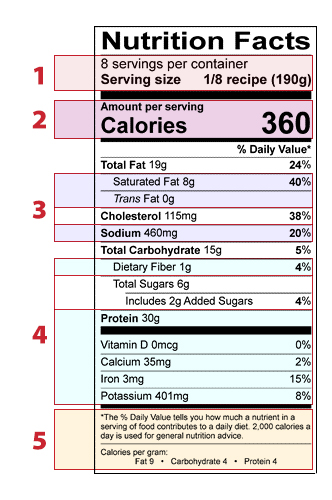
/Untitled-design-1--5755c3703df78c9b46903dab.jpg)

:max_bytes(150000):strip_icc()/Untitled-design-1--575368573df78c9b4691365f.jpg)
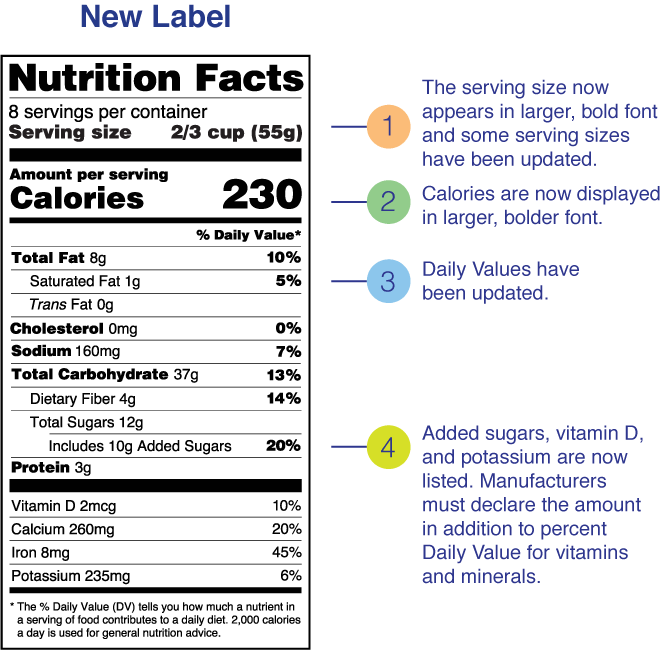


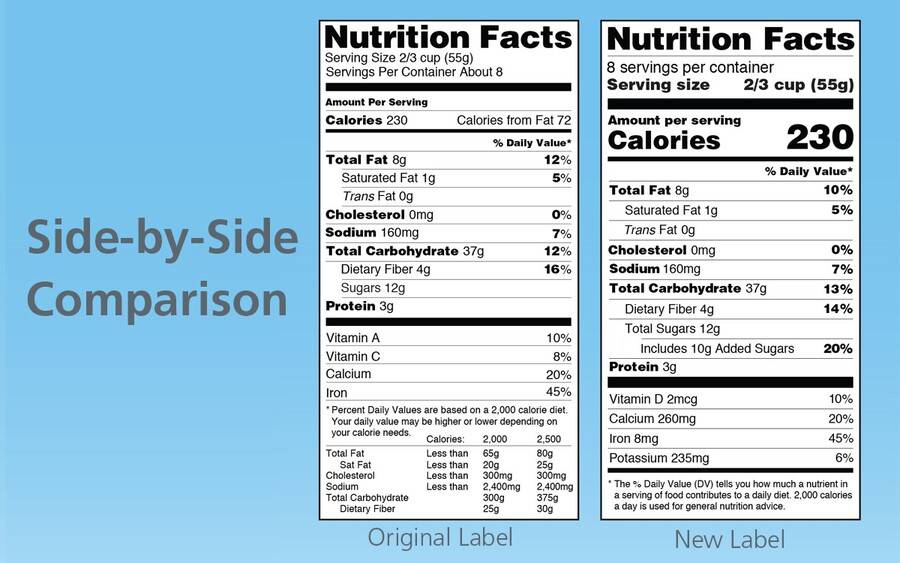

Post a Comment for "41 nutritional value food labels"